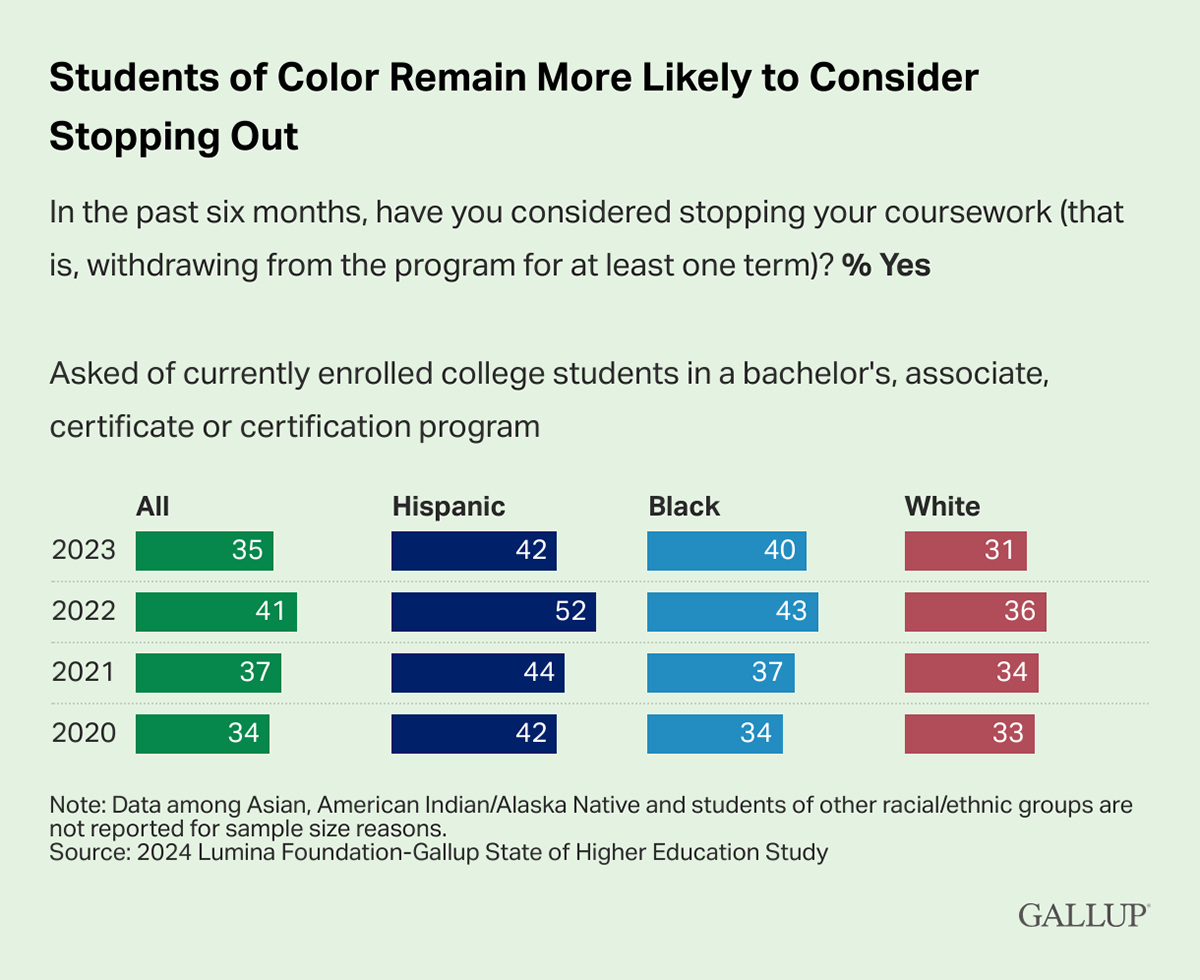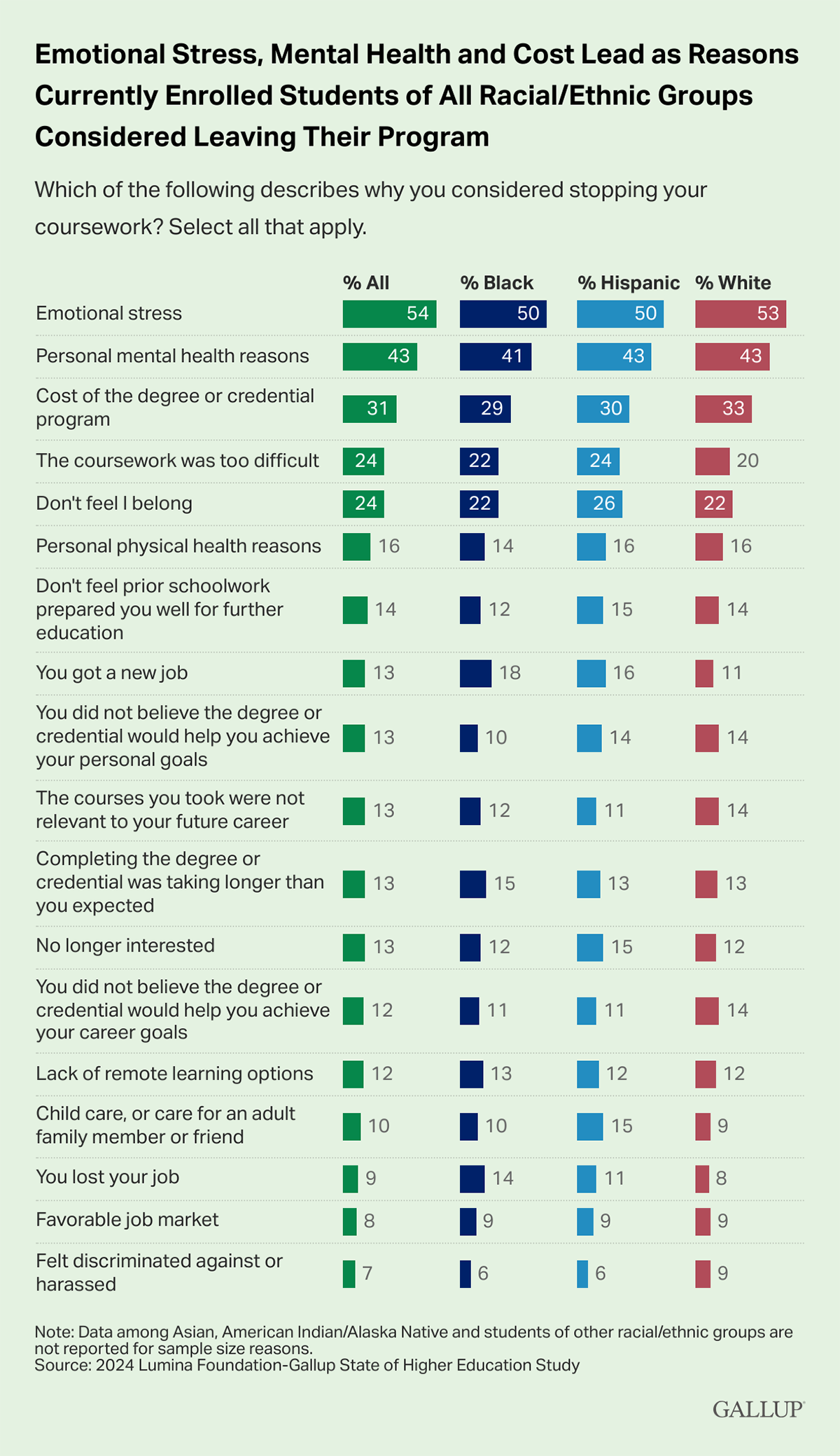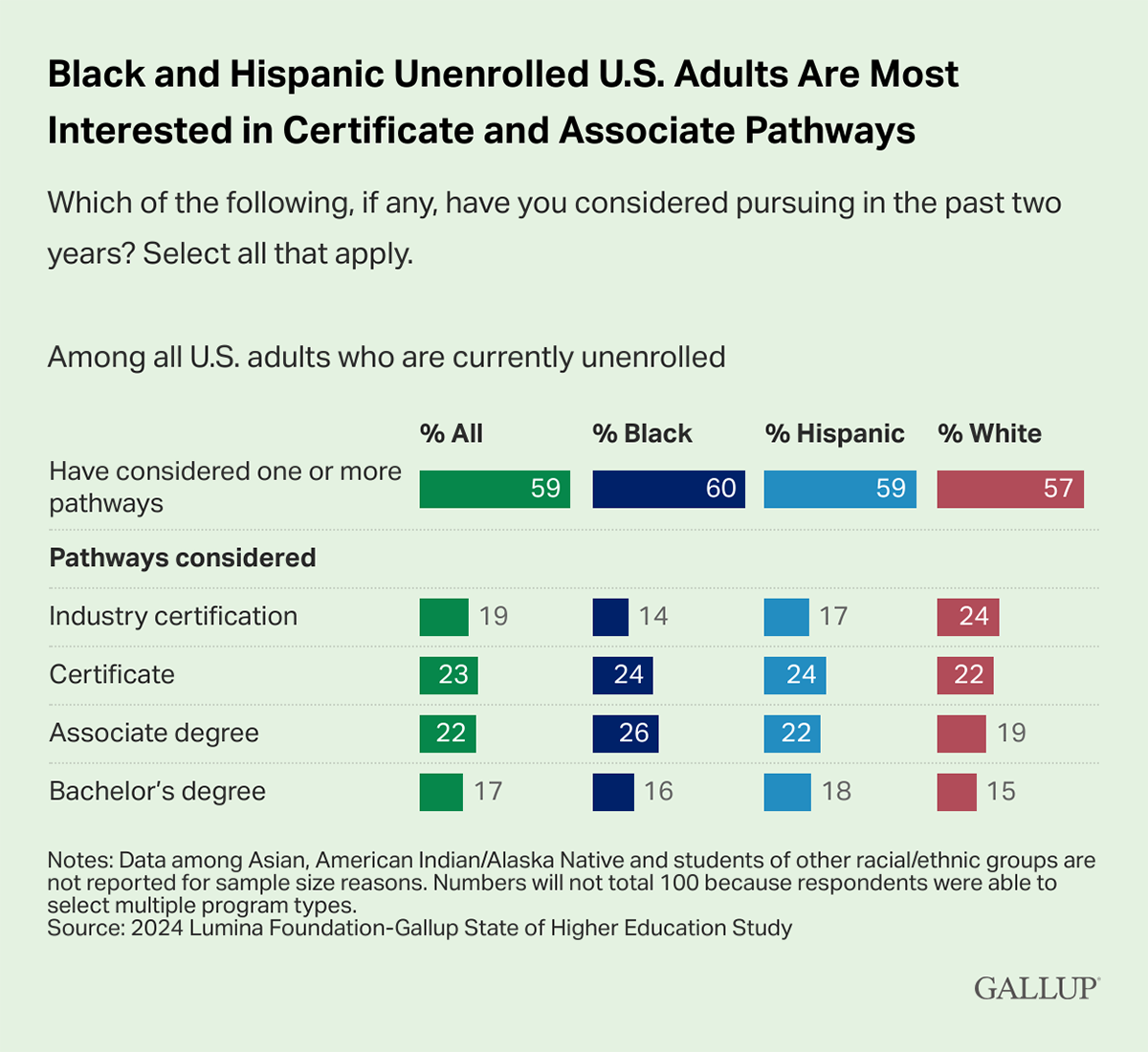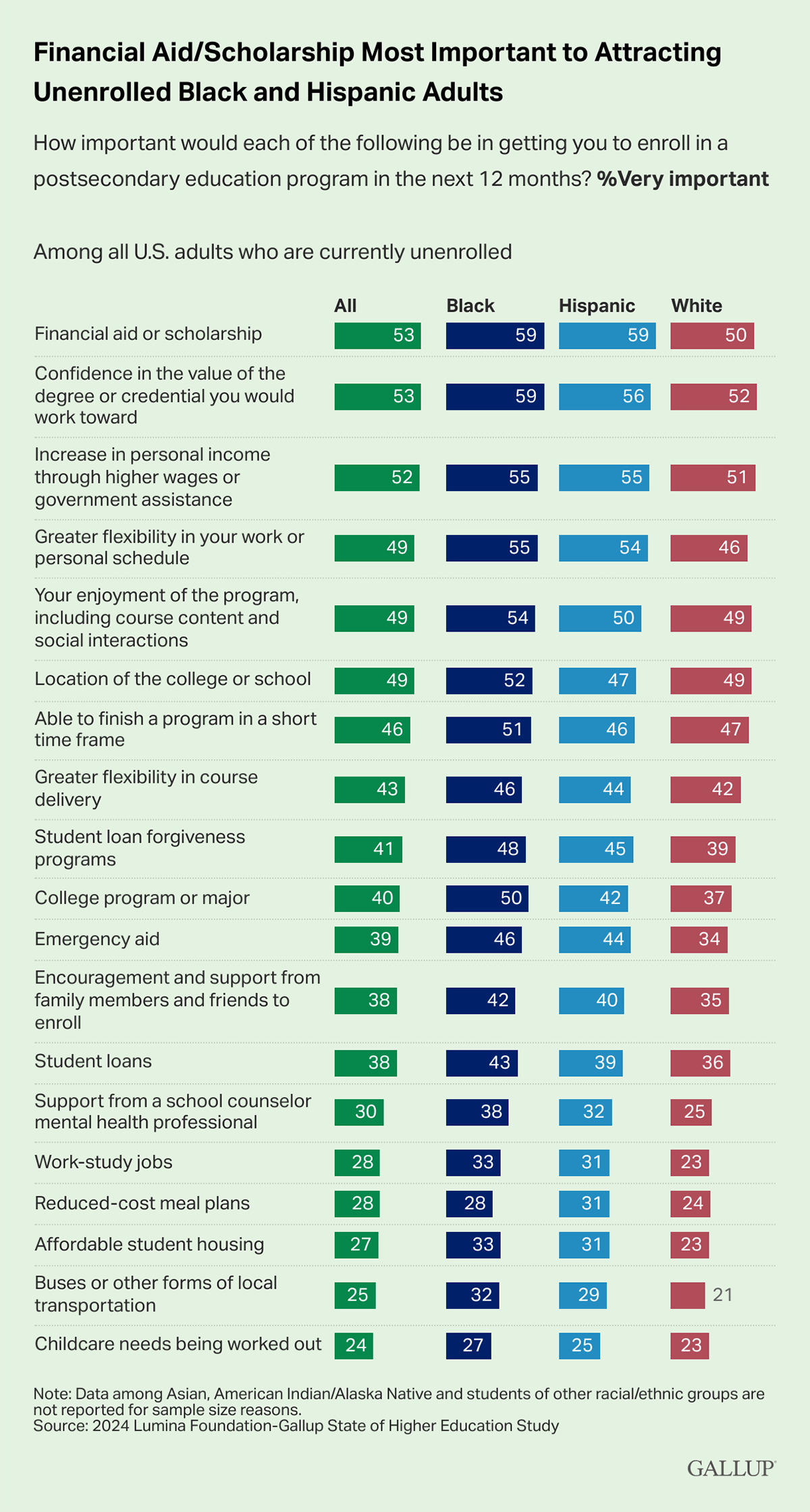Stress Leading Cause Why Black and Latino Students Leave College
From mental health to cost, four things to know about key reasons shaping Black and Latino students’ postsecondary decisions.

Get stories like this delivered straight to your inbox. Sign up for The 74 Newsletter
A new report has found Black and Latino students continue to be more likely than their white peers to leave postsecondary education even as college enrollment has slowly increased since the pandemic.
The report from Gallup and the Lumina Foundation surveyed more than 14,000 respondents in the fall of 2023 — including about 6,000 enrolled college students, 5,000 students who left college and 3,000 adults who never enrolled.
More than 40 percent of Black and Latino students considered leaving compared to 30 percent of white students — with stress, mental health and cost leading the reasons why.
“The fact that stress and mental health concerns continue to be the number one concern for Black and Latino students is alarming,” said Dr. Courtney Brown, vice president of impact and planning at the Lumina Foundation. “It’s something we need to pay attention to because it’s almost like a cry for help for [postsecondary] institutions to do something about this.”
Brown said Black and Latino adults’ enthusiasm for enrolling in a traditional four-year college has waned in comparison to certificate and associate degree pathways.
Most recent enrollment gains were carried by community colleges with a vocational program focus compared to those with a transfer focus.
“Black and Latino adults recognize the cost is high and their time is limited,” said Brown. “So if they can invest in something like a certificate or associate degree that gets them into the workforce as fast as possible it makes more sense.”
Here are four key takeaways from the report:
1. Black and Latino students are more likely to leave postsecondary programs than their white peers.

More than 40 percent of Black and Latino students were likely to consider leaving college compared to about 30 percent of white students.
Black students experienced slight improvement compared to 2022 but their likelihood of leaving remained higher than 2021 and 2020.
Latino students also saw improvement compared to 2022 returning them to similar levels in 2020.
2. Emotional stress, mental health and cost are consistent reasons across racial groups for why current students considered leaving their postsecondary programs.

More than 50 percent of students said stress was their biggest reason to consider leaving college — followed by mental health and cost by more than 40 and 30 percent respectively.
Brown said Black and Latino students are more likely than white students to balance coursework with a part or full time job in addition to taking care of family members.
“All of these students greatly value getting a degree and understand how important it is, but all these things accelerate their stress level,” Brown said.
She added how the competing priorities in their lives influence their desire to leave their postsecondary education to join the workforce and earn income faster.
“Black and Latino students often don’t have the money to actually enroll or stay enrolled,” Brown said. “So it becomes hard for them when they can get a job but the opportunity is lost because they’re in class.”
“It’s short-sighted and they end up losing that opportunity cost because with a degree they would be able to get a better job in the long-term,” she added.
3. Black and Latino adults who have considered enrolling in a postsecondary program are largely interested in certificate and associate pathways.

Nearly six in 10 unenrolled adults have considered enrolling in a postsecondary program in the past two years.
But, Black and Latino adults are more likely to consider a certificate or associate program compared to a slightly smaller number who have considered a bachelor’s degree.
Brown said postsecondary institutions can help Black and Latino students who have difficulty working towards a bachelor’s degree by providing resources such as healthcare, mental health services and childcare facilities.
“A bachelor’s degree is a lot more involved and it’s going to take a few years minimum if you’re going full time,” Brown said. “So providing these services will give them a leg up to completion.”
4. Financial aid and scholarships hold larger importance to Black and Latino adults than their white peers.

Nearly 60 percent of Black and Latino adults said financial aid and scholarships are important to get them to enroll in a postsecondary program in the next year compared to about 50 percent of white adults.
Also, more than 40 percent of Black and Latino adults said emergency aid would influence their enrollment compared to about 30 percent of white adults.
“I hope this data becomes a call to action for [postsecondary] institutions,” Brown said. “Their attainment rate is very low because our system has failed them again and again, so we can and must do better.”
Get stories like these delivered straight to your inbox. Sign up for The 74 Newsletter

;)
